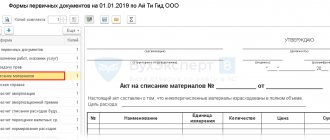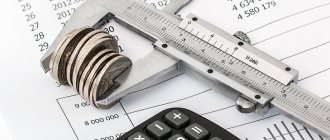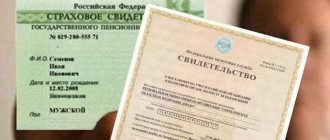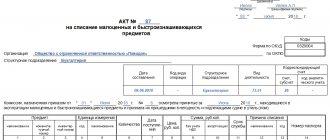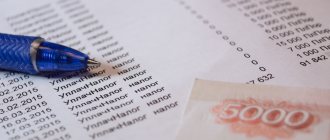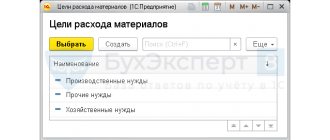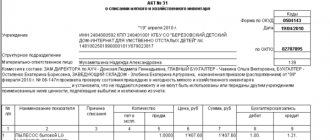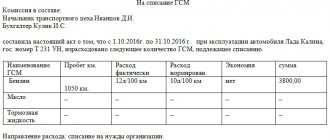The act of revaluation of goods is drawn up according to the sample, if it is necessary to revaluate or discount certain commodity items. The reasons may be different - the expiration date has changed or the expiration date is ending, or the product may be obsolete. The price at which products are sold should change. Every entrepreneur faces this; usually such operations are carried out every day. They help you avoid operating at a loss and respond in a timely manner to changes in the market situation. Let's understand what this process is, how it is performed and when it is appropriate.
Revaluation of goods: what is it in the store
This is an event of stable recalculation of the cost of individual items or groups of product items in order to improve their demand in the market. The score may change up or down for various reasons. Due to circumstances, the price tag may be lower than the purchase price. This usually applies to SOEs, but less often to fixed assets, work in progress and the cadastral price of land.
This is done to bring the actual value to the real market indicator. Performed in a changing environment, changes in tangible and intangible assets under the influence of competition and other temporary factors. This is necessary to get rid of old stocks of product groups, optimize taxation and take into account depreciation.
The basis for such action is the order of the manager. At their own request, employees should not carry out markdowns or revaluations.
Reasons for revaluation of goods in warehouse
They can be very different, but they are necessarily described in the documents. Among the main motives officially enshrined are:
- the supplier brought a batch whose quality was worse than expected;
- The expiration or storage period is ending, you need to sell off the leftovers;
- demand or supply has changed, it’s time to adapt to changes, especially in the seasonal area;
- the VAT rate has increased or decreased or other parameters have been adjusted;
- the product has lost some of its original consumer properties;
- overcrowded warehouses, space needs to be freed up;
- everything that is stored is obsolete and no longer interesting to buyers;
- increased inflation - it is necessary to cover the emerging costs;
- sale of units that are presented as samples on the sales floor.
Ready-made solutions for all areas
Stores
Mobility, accuracy and speed of counting goods on the sales floor and in the warehouse will allow you not to lose days of sales during inventory and when receiving goods.
To learn more
Warehouses
Speed up your warehouse employees' work with mobile automation. Eliminate errors in receiving, shipping, inventory and movement of goods forever.
To learn more
Marking
Mandatory labeling of goods is an opportunity for each organization to 100% exclude the acceptance of counterfeit goods into its warehouse and track the supply chain from the manufacturer.
To learn more
E-commerce
Speed, accuracy of acceptance and shipment of goods in the warehouse is the cornerstone in the E-commerce business. Start using modern, more efficient mobile tools.
To learn more
Institutions
Increase the accuracy of accounting for the organization’s property, the level of control over the safety and movement of each item. Mobile accounting will reduce the likelihood of theft and natural losses.
To learn more
Production
Increase the efficiency of your manufacturing enterprise by introducing mobile automation for inventory accounting.
To learn more
RFID
The first ready-made solution in Russia for tracking goods using RFID tags at each stage of the supply chain.
To learn more
EGAIS
Eliminate errors in comparing and reading excise duty stamps for alcoholic beverages using mobile accounting tools.
To learn more
Certification for partners
Obtaining certified Cleverence partner status will allow your company to reach a new level of problem solving at your clients’ enterprises.
To learn more
Inventory
Use modern mobile tools to carry out product inventory. Increase the speed and accuracy of your business process.
To learn more
Mobile automation
Use modern mobile tools to account for goods and fixed assets in your enterprise. Completely abandon accounting “on paper”.
Learn more Show all automation solutions
How to quickly re-price goods
It is very important not only to recalculate the cost in a timely manner, but also to keep records of the results. Later, with the help of these accounting papers, it will be possible to track how the price changed, whether an increase or decrease was used, and for what reasons this was done.
Before you start changing price tags, you need to compare its level in the company and in the market as a whole. This will help you avoid regular financial discrepancies and take into account all the possible subtleties of pricing.
Without analyzing competitors and the current situation, revaluing products is a risky process. This can cause a drop in revenue, especially when selling below market value.
It is also worth considering how exactly the records are kept. If the organization adheres to the cost method, then it will be necessary to conduct an inventory of those groups that will be revalued.
If this is a quantitative-cumulative option, then the assessment is performed based on accounting data.
Accounting and postings
The method of reflecting markdowns in accounting depends on the specifics of the enterprise - a wholesale company or a retail enterprise. The legislation offers two ways to account for inventory : at purchase or at sales prices.
Attention! Only retail trade enterprises are allowed to keep records of inventory items at sales prices (paragraph 2, clause 13 of PBU 5/01).
In the event that the markdown will be made in an amount exceeding the markup, the enterprise creates a special reserve for the markdown of each unit or group of similar goods, which is reflected in accounting as follows: from the debit of account 91 (subaccount “Other expenses”) the amount is written off to the credit of account 14 reserve formed to reduce the cost of goods.
From the amount of the reserve, if necessary, losses for reducing the cost of products more than their cost are covered from the debit of account 14 to the credit of account 91 “Other expenses”.
In the balance sheet, the cost of goods is reflected minus the formed reserve (clause 25 of PBU 5/01 “Accounting for inventories”). The amount of the initially formed reserve may vary depending on market conditions. If the market value of the product has decreased even more, then the reserve is increased. Otherwise, the reserve is reduced or completely restored.
Enterprises that maintain a simplified method of accounting are exempt from the formation of a reserve (paragraph 2, paragraph 25 of PBU 5/01). Such enterprises include small businesses, non-profit enterprises and organizations participating in the Skolkovo project. All other organizations must form a reserve for inventory depreciation without fail (clause 20 of the Guidelines for accounting of inventories).
At purchase prices
It is applicable for both wholesale and retail.
Example:
The store received a batch of bed linen sets (100 pieces) at a price of 2,150 rubles. per piece, the store set a retail price of 3,400 rubles. (VAT included). 35 sets were sold at this price. Based on the results of the inventory, the commission decided to discount the bed linen, setting the price at 2,700 rubles. Another 10 sets were sold.
In the case where goods and materials were discounted within the amount of the trade margin, then the decrease in its value does not need to be reflected in accounting:
- Dt 41 – Kt 60 – 215,000 rub. – 100 units of linen sets were capitalized at a purchase price of RUB 2,150.
- Dt 50 – Kt 90 (sub-account “Revenue”) – 119,000 rubles. – 35 sets of underwear were sold and the accountant reflects the revenue for 35 sets at a retail price of 3,400 rubles.
- Dt 90 (sub-account “Cost of sales”) – Kt 41 – RUB 75,250. – the cost of 35 sold sets is written off.
- Dt 90 (sub-account “VAT”) - Kt 68 (sub-account “Calculations for VAT”) - value added tax is charged on sold sets of linen.
After markdown, the calculation of the sales amount should be carried out at new prices:
- Dt 50 – Kt 90 (sub-account “Revenue”) – 27,000 rubles. – 10 discounted sets were sold and the accountant reflects the proceeds from sales at the new price of 2,700 rubles.
- Dt 90 (sub-account “Cost of sales”) – Kt 41 – 21,500 rubles. – the cost of 10 sets was written off at purchase prices.
- Dt 90 (sub-account “VAT”) - Kt 68 (sub-account “Calculations for VAT”) - VAT is charged on sets of linen sold.
At sales prices
This accounting method is used in retail.
Example:
If at a retail outlet accounting is carried out at sales prices, then the postings from the previous example will look like this:
- Dt 41 – Kt 60 – 215,000 rub. – 100 sets of linen were capitalized at a purchase price of RUB 2,150.
- Dt 41 – Kt 42 – 125,000 rub. – the trade margin on the purchased batch of bed linen is reflected in a separate posting.
- Dt 50 – Kt 90 (sub-account “Revenue”) – 119,000 rubles. – 35 sets were sold and the accountant reflects the proceeds from sales at a retail price of 3,400 rubles.
- Dt 90 (sub-account “Cost of sales”) – Kt 41 – RUB 75,250. (35 pcs. x 2,150 rub.) – the cost of sold sets is written off.
- Dt 90 (sub-account “Cost of sales”) – Kt 42 – 43,750 rub. – the trade margin on sold sets is reversed ((RUB 3,400 – RUB 2,150) x 35 pcs.).
- Dt 90 (sub-account “VAT”) – Kt 68 (sub-account “Calculations for VAT”) – VAT on sold sets of linen is written off.
After the remaining sets have been marked down, the accountant records the following entries:
- Dt 41 – Kt 42 – 45,500 rub. – “reversal” operation to reduce the difference in the trade margin of the remaining 65 discounted sets ((3,400 rubles – 2,700 rubles) x 65 pcs.).
- Dt 50 – Kt 90 (sub-account “Revenue”) – 27,000 rubles. – revenue from the sale of 10 sets of linen at a new price of 2,700 rubles is reflected.
- Dt 90 (sub-account “Cost of sales”) – Kt 41 – 21,500 rubles. – write-off of the sales value of 10 sold sets.
- Dt 90 (sub-account “Cost of sales”) – Kt 42 – 5,500 rub. – the trade margin on sets sold after markdown was reversed ((RUB 2,700 – RUB 2,150) x 10 pcs.).
- Dt 90 (sub-account “VAT”) – Kt 68 (sub-account “Calculations for VAT”) – VAT is written off on sets of linen sold.
How does revaluation of goods occur in retail trade?
Based on the results, a document must be drawn up that confirms the fact of a price change: an inventory-act, it reflects the changes taking place.
| Nomenclature number | Name | Unit change | Qty | Product cost | Difference | ||||
| Before evaluation | After | Markdown (-) | Revaluation (+) | ||||||
| price | sum | Price | sum | ||||||
| 123 | Washing machine | PC. | 1 | 16400 | 16400 | 14900 | 14900 | 1500 | |
| 652 | Mixer | PC. | 3 | 3200 | 9600 | 2800 | 8400 | 1200 | |
| 984 | Multicooker | PC. | 4 | 5400 | 21600 | 5900 | 23600 | 2000 | |
| 711 | Meat grinder | PC. | 2 | 9800 | 19600 | 10500 | 21000 | 1400 | |
| Total: | 67200 | 67900 | 2700 | 3400 | |||||
But it is worth noting that if accounting is kept at purchase prices, then the revaluation is usually not reflected in the accounting department using a leash.
When calculating the sales value, it is necessary to draw up an inventory report, the form of which can be found below, and make an entry that will reflect trade markups on goods.
Dt 41.2, Kt 42. And the amount after the price change is included - 67,900 rubles.
Revaluation of goods in 1C 8.3
Revaluation of goods is the determination of the difference between the cost of goods at previous retail prices and the newly introduced price for the goods. When the new price is lower than the previous one, the product is marked down; if it is higher, then it is revalued.
Revaluation of goods during markdown can be associated both with low consumer demand for the goods being sold, and with ongoing promotions, or, for example, due to a decrease in the quality of the goods, due to obsolescence, when the functional properties of the goods do not keep up with progress, and many other reasons. Revaluation may occur, for example, for reasons of purchasing similar goods at higher prices.
Commodity revaluation is drawn up in a document in which you need to indicate the name of the product, its quantity, storage unit, previous and new price. All changes in prices, according to the law, must be carried out only on the basis of an order from the head of the company. The amount of data that has to be manipulated during such procedures can be significant. The functionality of the 1C:Accounting software product helps the accountant to re-evaluate or mark down goods in the warehouse in the shortest possible time and without headaches.
In “1C: Accounting”, revaluation is done using the document “Revaluation of Goods”, from which you can print a form containing information about the revalued product indicating the new price entered.
Commodity revaluation is carried out only in companies that have organized accounting of goods at sales prices on account 41.11 “Goods in retail trade” (in the “Automated point of sale at sales price”). Such goods are taken into account in a warehouse with the “Retail store” type.
Fig. 1 Warehouse with the “Retail store” type
The goods can be delivered either directly to the retail warehouse or to the wholesale warehouse.
In the first case, it is necessary to immediately set retail prices for incoming goods using the document “Setting item prices”. When it is carried out, a markup will immediately be allocated for the goods sold at retail.
For example, a retail warehouse received 200 pieces of goods. at the admission price of 170 rubles. We set the retail price at 250 rubles. When conducting a receipt, the program capitalizes on November 41 the goods at the purchase price in the amount of 34,000 rubles, and the difference between the purchase and sale prices in the amount of 16,000 rubles. will be reflected in account 42.01 “Trade margin in automated retail outlets.” As a result, the goods will be listed on account 41.11 at the retail price, and the markup will be on account 42.01.
Fig. 2 As a result, the goods will be listed on account 41.11 at the retail price, and the markup will be on account 42.01
When goods are first received at a wholesale warehouse and then transferred to a retail store, the additional valuation to the retail price is carried out not by the receipt document, but through the “Transfer of Goods”. And in this case, it is also necessary to pre-set retail prices, since these are the prices at which the goods are sold in the store.
When there is a need to re-evaluate a product, for example, the retail price of our product has increased, this is reflected in the document “Setting item prices”.
Fig.3 Setting item prices
It is necessary to create a document “Revaluation of goods”. To do this, go to the revaluation document and click “Fill in at changed prices.” The program sees that the retail price of our product has changed and adds it to the tabular section, and immediately enters the old and new prices. All that remains is to carry out the document.
Fig.4 Posting a document
Account 42.01 will reflect the change in the markup on our goods, and account 41.11 will reflect the revaluation of the goods to the new retail price.
Fig.5 Account 42.01 will reflect the change in the markup on our goods, and account 41.11 will reflect the revaluation of the goods to the new retail price
If the new price is reduced relative to the old one, the revaluation will occur in red.
Fig.6 Revaluation of red reversal
You can fill out the revaluation document with a list of goods using the “Add” buttons, but in this case you will have to manually fill in all the fields, and through “Fill” the document will receive data on all balances in the warehouse or only on changed prices, as happened above.
From the document you can print the form “Revaluation of goods in retail” displaying the product, its old and newly set price.
Fig.7 Revaluation of goods in retail
Thus, when the price of a product changes, it is necessary to re-evaluate all goods that are in stock to the new retail price. In the 1C: Accounting program, all processes are quite simple and fairly automated; it will not be difficult for a company accountant to quickly and fully revaluate goods in 1C and carry out the necessary revaluation of goods in the warehouse.
How to Document Changes in Wholesale Trade
The main reasons for such replacements are fluctuations in demand, including seasonal demand, expiration of the sales period and increased inflation. Each seller strives to reduce costs and earn the maximum on the sale of a batch. Therefore, revaluation is often used as a means of compensating for storage and sales costs.
Types of possible revaluation:
- change to the value of the last purchase price (if purchased at free prices);
- reduction/increase to the level of the commodity producer at the time of sale (according to fixed indicators);
- adjustment in conditions of limited demand - when the expiration date expires;
- markdown of products that have lost some of their attractiveness to buyers.
It depends on the type where the proceeds from the revaluation will go. It may be used to replenish working capital or other purposes.
The shortfall is covered by the perpetrators, taken from distribution costs or from the organization’s own finances.
The implementation is formalized by an order from the head or an order received from government bodies.
The event is carried out by a specially created commission immediately after the end of the working day before the day the new prices are introduced. Often this process is accompanied by an inventory.
During the revaluation, employees remove the old and put on new price tags, and also draw up a statement of material assets. It is necessary to create it in two copies at once, since one will go to the accounting department.
| Business transaction | Dt | CT |
| the markdown is attributed to the financial result | 90.10 | 41.1 |
| Decrease in value is compensated by the consolidated liability of the supplier and the buyer | 90.10 | 41.1 41.1 |
| Returned at the expense of the supplying party | 41.1 | |
| The culprit was identified and paid | 73 | 41.1 |
Markdown in accounting
New prices for goods can be reflected in accounting in different ways: it all depends on the method of valuing goods adopted in the policy of a particular retail outlet.
Accounting for goods at their acquisition prices (purchase prices)
This accounting method is used by both retail outlets and wholesale organizations.
- If the price of a product is reduced by an amount within the trading margin , there is no need to reflect this in accounting at all.
FOR EXAMPLE. The Home Everything store purchased the 10th batch of tablecloths (25 pieces) at a price of 200 rubles. per piece, putting them on sale for 350 rubles. (VAT included). 20 tablecloths were sold at this price, the rest were left in the store. Based on the results of the inventory, it was decided to discount the tablecloths by putting a price tag of 300 rubles on them. 3 more tablecloths were sold. What should the store accountant write down in the journal entries? Entries will vary in time.
In the month of delivery of a batch of tablecloths:
- debit 41, credit 60 – 5,000 rub. (25 pcs. x 200 rub.) – posting of a batch of tablecloths;
- debit 50, credit 90, subaccount “Revenue” – 7,000 rubles. (350 rub. x 20 pcs.) – proceeds from the sale of tablecloths;
- debit 90, subaccount “Cost of sales”, credit 41 – 4,000 rubles. (200 rub. x 20 pcs.) – write-off of the cost of tablecloths sold;
- debit 90 subaccount “VAT”, credit 68 subaccount “Calculations for VAT” - accrual of VAT on goods sold.
In the month of sale of discounted tablecloths:
- debit 50, credit 90, subaccount “Revenue” – 900 rubles. (300 rub. x 3 pcs.) - reflection of revenue from the sale of tablecloths at a new price;
- debit 90 subaccount “Cost of sales”, credit 41 – 600 rub. (200 rub. x 3 pcs.) – write-off of the purchase price of sold tablecloths;
- debit 90 subaccount “VAT”, credit 68 subaccount “Calculations for VAT” - accrual of VAT on goods sold.
- If the amount of the markdown is greater than the trade margin , you cannot change the original discount prices, otherwise you will end up selling at a loss. In this case, the company must have a special reserve for markdowns, which is reflected in accounting as follows: debit 91 subaccount “Other expenses”, credit 14 - creating a reserve for reducing the cost of goods.
ATTENTION! This reserve is created for each unit of inventory according to accounting.
Then amounts from the reserve are written off as goods are sold: debit 14, credit 91 “Other expenses”.
Goods accounted for at sales prices
At the selling price, goods are taken into account, as a rule, in retail trade, separately highlighting trade markups.
- If the amount of the markdown falls within the markup limit , the accountant must make a reversing entry: debit 41, correspondence with the credit of account 42 “Trade margin”.
FOR EXAMPLE. Let’s take as a basis the previous example with the “Everything for the Home” store and discounted tablecloths, changing the accounting conditions: let the store keep records at sales prices, not purchase prices. In this case, the accounting entries will look like this:
In the month of delivery of a batch of tablecloths:
In the month of sale of discounted tablecloths:
- debit 41, credit 42 – 1000 rub. (350 rub./piece - 300 rub./piece) x 20 pieces) – the trade margin on the discounted tablecloths remaining for sale has been reversed;
- debit 50, credit 90, subaccount “Revenue” – 900 rubles. (300 rub. x 3 pcs.) - reflection of revenue from the sale of tablecloths at a new price;
- debit 90 subaccount “Cost of sales”, credit 41 – 900 rub. (200 rub. x 3 pcs.) – write-off of the sales value of sold tablecloths;
- debit 90 subaccount “Cost of sales”, credit 42 – 300 rub. ((300 rub./pc. – 200 rub./pc.) x 3 pcs.) – reduced (trade margin on sold discounted tablecloths reversed.
- debit 90 subaccount “VAT”, credit 68 subaccount “Calculations for VAT” - accrual of VAT on goods sold.
RESULT. If the goods, although they were discounted, were sold above cost, the organization makes a profit. If the markdown turned out to be greater than the cost, the sale turned out to be a loss. Both financial results are recognized in tax accounting based on the results of the reporting period (clause 2 of Article 268 of the Tax Code of the Russian Federation).
IMPORTANT! If the price deviation exceeds a fifth of those accepted on the market, then additional taxes may be assessed during control.
What to do before drawing up the act
In order for the paper to have legal force, a commission must first be created. She will deal with price changes. To establish it, you will need a special order from the head of the organization, which can be in free form. A chairman is also elected there; he will supervise the event and sign the documentation at the end.
It will also require a reason or reference - the reason why it all begins. We discussed the reasons for reducing or increasing the cost above; any chosen one must correspond to reality and not contradict the legislation of the Russian Federation.
How does the markdown procedure work?
Step 1 – solution. First, the management of the organization decides to reduce the selling price of the product. This can be done as a result of analyzing the renewal of the assortment and studying economic reports, as well as as a result of requests from heads of structural divisions who want to correct the current situation.
Step 2 – inventory. Having discovered an item that can no longer be sold at the current price, management must take inventory of it. This must be done not only according to the requirements of the Law, which obliges to carry out an inventory in the event of damage to goods (Clause 2 of Article 12 of Federal Law No. 129). Inventory is absolutely necessary in retail trade, since accounting cannot always know how much and what kind of goods are left in a particular outlet. Inventory takes place according to general rules:
- creation or activation of a permanent inventory commission (based on the order of the manager);
- checking the actual availability of goods (materially responsible persons take part);
- recording the quantity and condition of goods;
- entering the information received into the inventory list (INV-3 form);
- drawing up a comparison statement (form INV-19), which will contain data on all identified discrepancies with accounting indicators;
- summing up the inventory results - drawing up an accounting sheet (form INV-26) and an order based on the inventory results.
Step 3 – markdown or write-off. If a product has completely lost its value, it must be written off. If you can still sell it, you need to re-evaluate it downwards. To do this, the following actions are carried out: the manager issues an order on revaluation, and on its basis a revaluation act (the form can be developed by the organization independently), which must include:
- names and articles of goods subject to markdown;
- characteristics defining these goods;
- quantity according to inventory data (in accepted units of measurement);
- both prices – old and established;
- reasons for which the markdown was made.
Components of a document
The act is drawn up if there are few positions. One page is enough here. If large-scale work with a large number of products is planned, then a full inventory is formed. You can call it that - an inventory-act. In addition, an order is being prepared, without which work should not begin or any changes in price tags. Examples of standard documents are below.
It starts with a management visa; without it, the paper has no legal force. The affixed signature certifies the list for transformation and approves it. Therefore, at the top of the paper the position and full name of the head of the organization are indicated.
It is also advisable to affix a live stamp, but since 2014 this is no longer necessary. After that, their use began to be easier to approach.
At the top of the act it states:
- Date of preparation;
- Document Number;
- Full name of the chairman, his position, signature, other members of the commission;
- Date and number of the order in accordance with which the changes occur.
In some cases, a new assessment is made on the basis of another document. Then a link to it must be indicated in the body of the file.
Next is a table where a separate row is allocated for each product; it is forbidden to combine several into one. This division greatly simplifies the search.
| Item number | Name | Unit change | Qty | We're standing. before revaluation | Price after | difference | notes |
| If not, then just serial | By invoice | If possible, according to OKEI | How many pieces are involved? | Indicated per piece and total | Divided into revaluation and depreciation | all important notes, nuances, and storekeeper’s explanations are included | |
Filling out the table takes the longest time. The easiest way is to create a file through special programs to save time when filling out. Then be sure to check it and only then certify it and accept it for use.
When everything is completed, at the end fields are filled in for the signatures of the commission members and their chairman. The financially responsible person is also indicated. The manager at the bottom no longer signs, since he has already signed in the header of the page.
Order for revaluation of goods - sample
- The name of the organization is indicated along with the form of ownership (LLC, JSC, Individual Entrepreneur).
- Then enter the city, street and house number.
- Name of the form.
- Document date and number.
- The word "I command".
Next, it is written down from what date and where the changes are installed. If this is a supermarket chain that hosts targeted promotions, then the addresses of everyone where the change will work are required.
You need to write it like this:
- Install from 05/12/20 in the stores of Tandoor LLC, located at the following addresses: Rostov-on-Don, Voroshilovsky Avenue, 85, Rostov-on-Don, Lenina Street, 17, Rostov-on-Don, Gogolevsky Lane, 41 discount of 10% on product items that are listed in the table below.
| Barcode | Name |
| 4607177744216 | Rye bread, 450 g |
| 000000123358 | Razdan bread 500 g |
| 1021692327014 | Premium flour 1kg |
| 4600209003190 | Baby #2 (rice flour) |
| 016972001044 | Soft Taco Flatbread 283 g |
| 000000005142 | Butter is not flaky. 82.5 percent 500 g Belarus |
- Re-evaluate and print updated price tags.
- Control of the results is entrusted to the senior seller and store merchandiser.
Director of the enterprise Ivanov I.V.
How to revalue a product
It is very important not only to recalculate the cost in a timely manner, but also to keep records of the results. Later, with the help of these accounting papers, it will be possible to track how the price changed, whether an increase or decrease was used, and for what reasons this was done.
Before you start changing price tags, you need to compare its level in the company and in the market as a whole. This will help you avoid regular financial discrepancies and take into account all the possible subtleties of pricing.
Without analyzing competitors and the current situation, revaluing products is a risky process. This can cause a drop in revenue, especially when selling below market value.
It is also worth considering how exactly the records are kept. If the organization adheres to the cost method, then it will be necessary to conduct an inventory of those groups that will be revalued.
If this is a quantitative-cumulative option, then the assessment is performed based on accounting data.
How does revaluation of goods occur in retail trade?
Based on the results, a document must be drawn up that confirms the fact of a price change: an inventory-act, it reflects the changes taking place.
| Nomenclature number | Name | Unit change | Qty | Product cost | Difference |
| Before evaluation | After | Markdown (-) | Revaluation (+) | ||
| price | sum | Price | sum | ||
| Washing machine | PC. | ||||
| Mixer | PC. | ||||
| Multicooker | PC. | ||||
| Meat grinder | PC. | ||||
| Total: |
But it is worth noting that if accounting is kept at purchase prices, then the revaluation is usually not reflected in the accounting department using a leash.
When calculating the sales value, it is necessary to draw up an inventory report, the form of which can be found below, and make an entry that will reflect trade markups on goods.
Dt 41.2, Kt 42. And the amount after the price change is included - 67,900 rubles.
How to Document Changes in Wholesale Trade
The main reasons for such replacements are fluctuations in demand, including seasonal demand, expiration of the sales period and increased inflation. Each seller strives to reduce costs and earn the maximum on the sale of a batch. Therefore, revaluation is often used as a means of compensating for storage and sales costs.
Types of possible revaluation:
- change to the value of the last purchase price (if purchased at free prices);
- reduction/increase to the level of the commodity producer at the time of sale (according to fixed indicators);
- adjustment in conditions of limited demand - when the expiration date expires;
- markdown of products that have lost some of their attractiveness to buyers.
It depends on the type where the proceeds from the revaluation will go. It may be used to replenish working capital or other purposes.
The shortfall is covered by the perpetrators, taken from distribution costs or from the organization’s own finances.
The implementation is formalized by an order from the head or an order received from government bodies.
The event is carried out by a specially created commission immediately after the end of the working day before the day the new prices are introduced. Often this process is accompanied by an inventory.
During the revaluation, employees remove the old and put on new price tags, and also draw up a statement of material assets. It is necessary to create it in two copies at once, since one will go to the accounting department.
| Business transaction | Dt | CT |
| the markdown is attributed to the financial result | ||
| Decrease in value is compensated by the consolidated liability of the supplier and the buyer | 41.1 41.1 | |
| Returned at the expense of the supplying party | ||
| The culprit was identified and paid |
What to do before drawing up the act
In order for the paper to have legal force, a commission must first be created. She will deal with price changes. To establish it, you will need a special order from the head of the organization, which can be in free form. A chairman is also elected there; he will supervise the event and sign the documentation at the end.
It will also require a reason or reference - the reason why it all begins. We discussed the reasons for reducing or increasing the cost above; any chosen one must correspond to reality and not contradict the legislation of the Russian Federation.
Components of a document
The act is drawn up if there are few positions. One page is enough here. If large-scale work with a large number of products is planned, then a full inventory is formed. You can call it that - an inventory-act. In addition, an order is being prepared, without which work should not begin or any changes in price tags. Examples of standard documents are below.
It starts with a management visa; without it, the paper has no legal force. The affixed signature certifies the list for transformation and approves it. Therefore, at the top of the paper the position and full name of the head of the organization are indicated.
It is also advisable to affix a live stamp, but since 2014 this is no longer necessary. After that, their use began to be easier to approach.
At the top of the act it states:
- Date of preparation;
- Document Number;
- Full name of the chairman, his position, signature, other members of the commission;
- Date and number of the order in accordance with which the changes occur.
In some cases, a new assessment is made on the basis of another document. Then a link to it must be indicated in the body of the file.
Next is a table where a separate row is allocated for each product; it is forbidden to combine several into one. This division greatly simplifies the search.
| Item number | Name | Unit change | Qty | We're standing. before revaluation | Price after | difference | notes |
| If not, then just serial | By invoice | If possible, according to OKEI | How many pieces are involved? | Indicated per piece and total | Divided into revaluation and depreciation | all important notes, nuances, and storekeeper’s explanations are included |
Filling out the table takes the longest time. The easiest way is to create a file through special programs to save time when filling out. Then be sure to check it and only then certify it and accept it for use.
When everything is completed, at the end fields are filled in for the signatures of the commission members and their chairman. The financially responsible person is also indicated. The manager at the bottom no longer signs, since he has already signed in the header of the page.
Order for revaluation of goods - sample
- The name of the organization is indicated along with the form of ownership (LLC, JSC, Individual Entrepreneur).
- Then enter the city, street and house number.
- Name of the form.
- Document date and number.
- The word "I command".
Next, it is written down from what date and where the changes are installed.
If this is a supermarket chain that hosts targeted promotions, then the addresses of everyone where the change will work are required.
You need to write it like this:
| Barcode | Name |
| Rye bread, 450 g | |
| Razdan bread 500 g | |
| Premium flour 1kg | |
| Baby #2 (rice flour) | |
| Soft Taco Flatbread 283 g | |
| Butter is not flaky. 82.5 percent 500 g Belarus |
- Re-evaluate and print updated price tags.
- Control of the results is entrusted to the senior seller and store merchandiser.
Director of the enterprise Ivanov I.V.
Thank you!Thank you, your application has been accepted.
Continue
How to fix errors
We figured out how to re-price a product. But what if there was an inaccuracy or some column needs to be corrected?
Usually the process is carried out in the 1C program or similar. There is a form and some fields are filled in automatically. In cases where you have to fill out everything manually, it is important to try not to make mistakes. All empty lines are crossed out using a ruler.
But if you need to correct something, you need to cross out the error, and then write the correct value on the side or top. Then all members of the commission and the head himself sign next to the correction. If the MOL is present when drawing up the act, then he also puts his signature.
Change of price tags
We have figured out how to revaluate goods in a store, now it’s worth understanding how and in what order the tags themselves are changed.
The “priority” principle applies here. First, everything that goes “up” changes, and then those positions that go “down” change. In addition, it is forbidden to simply cross out the old price and write a new one next to it by hand.
It is recommended to print up-to-date information each time and change the sign on the rack or any other place where customers find out the information. We have already talked about the form in which price tags should be.
Cleverence offers Shop 15 software, which will help carry out revaluation from the software and data collection terminal accurately and quickly.
Accounting for revaluation of goods
The right program will help you:
- monitor shelf life;
- work simultaneously with any number of warehouses;
- keep all accounting records - write off, register, accept, carry out inventory and re-evaluate;
- generate and issue related documentation - accompanying papers, invoices, orders;
- create reports and view them from anywhere in the world.
offers installation of the best software for the job. Our employees will help you choose software that optimizes your organization’s business processes. For example, routine warehouse operations can be accelerated through Warehouse 15. This will help to automate all commodity accounting operations.
How to revaluate if accounting is carried out at purchase prices
If the company has chosen this method of accounting for products, then these markdowns will not be recorded in accounting unless it is higher than the amount of the trade margin. This should be stated in the accounting policy.
If you plan to change the price tag by more than a similar markup, then it is necessary to reduce the book value of the products. In this case, the difference between the amount at which goods are discounted and the interest rate must be reflected on the accounts. Additionally, the restored VAT, which previously reduced the debt to the budget, should be recorded.
How will it look like:
| Index | Price, rubles |
| Product | |
| Extra charge | |
| Trade discount – 30% | |
| Difference between markup and discount |
The last field must be reflected on the accounts. The following wiring is used for this:
Dt 91 Kt 41.2 200
The amount of restored VAT will be 800 (4000*20%). It is written as follows:
Dt 68 Kt 19 800
After this, the restored VAT must be written off against financial results:
Dt 91 Kt 19.3 800
Then it is sent to the budget as taxes:
Dt 68 Kt 51 800
But this is not the only reason why a product may fall in value. Sometimes the reason is an emergency, fires, loss of consumer properties or inflation.
Revaluation of goods: postings
For companies that keep records at sales prices, the postings will look like this:
| Operation | Dt | CT |
| Markdown based on inv. inventory | ||
| Sales of discounted goods | ||
| Sales tax | ||
| VAT |
How to revaluate if accounting is carried out at sales prices
Most organizations adopt this method. They calculate the extra charge and send it to account 42 with the same name.
The basis for establishing new prices is an order from management. With a cost accounting scheme, it is necessary to carry out an inventory of products that were accounted for at their sales value. Then an inventory list is compiled.
With a natural value system, revaluation is created on the basis of accounting data. When it decreases, the market price tag changes.
We looked at how to revaluate the value of goods in wholesale and retail, studied the transactions and nuances of the process.
Special programs help optimize and significantly speed up this event, reduce the number of errors in the registration process, and contribute to the formation of a complete package of documents for the tax service.
Reducing or increasing the price tag for products is a standard task that is performed by every company many times. The main thing is to do everything correctly so as not to raise questions from the inspectors. Our programs will help you with this.
Number of impressions: 136
Source: https://uspeh-163.ru/kak-pereotsenit-tovar/
How to fix errors
We figured out how to re-price a product. But what if there was an inaccuracy or some column needs to be corrected?
Usually the process is carried out in the 1C program or similar. There is a form and some fields are filled in automatically. In cases where you have to fill out everything manually, it is important to try not to make mistakes. All empty lines are crossed out using a ruler.
But if you need to correct something, you need to cross out the error, and then write the correct value on the side or top. Then all members of the commission and the head himself sign next to the correction. If the MOL is present when drawing up the act, then he also puts his signature.
Change of price tags
We have figured out how to revaluate goods in a store, now it’s worth understanding how and in what order the tags themselves are changed.
The “priority” principle applies here. First, everything that goes “up” changes, and then those positions that go “down” change. In addition, it is forbidden to simply cross out the old price and write a new one next to it by hand. It is recommended to print up-to-date information each time and change the sign on the rack or any other place where customers find out the information. We have already talked about the form in which price tags should be. Cleverence offers Shop 15 software, which will help carry out revaluation from the software and data collection terminal accurately and quickly.
Ready-made solutions for all areas
Stores
Mobility, accuracy and speed of counting goods on the sales floor and in the warehouse will allow you not to lose days of sales during inventory and when receiving goods.
To learn more
Warehouses
Speed up your warehouse employees' work with mobile automation. Eliminate errors in receiving, shipping, inventory and movement of goods forever.
To learn more
Marking
Mandatory labeling of goods is an opportunity for each organization to 100% exclude the acceptance of counterfeit goods into its warehouse and track the supply chain from the manufacturer.
To learn more
E-commerce
Speed, accuracy of acceptance and shipment of goods in the warehouse is the cornerstone in the E-commerce business. Start using modern, more efficient mobile tools.
To learn more
Institutions
Increase the accuracy of accounting for the organization’s property, the level of control over the safety and movement of each item. Mobile accounting will reduce the likelihood of theft and natural losses.
To learn more
Production
Increase the efficiency of your manufacturing enterprise by introducing mobile automation for inventory accounting.
To learn more
RFID
The first ready-made solution in Russia for tracking goods using RFID tags at each stage of the supply chain.
To learn more
EGAIS
Eliminate errors in comparing and reading excise duty stamps for alcoholic beverages using mobile accounting tools.
To learn more
Certification for partners
Obtaining certified Cleverence partner status will allow your company to reach a new level of problem solving at your clients’ enterprises.
To learn more
Inventory
Use modern mobile tools to carry out product inventory. Increase the speed and accuracy of your business process.
To learn more
Mobile automation
Use modern mobile tools to account for goods and fixed assets in your enterprise. Completely abandon accounting “on paper”.
Learn more Show all automation solutions
How reserves are formed
The created reserves (or they can be called the amount of possible losses that an organization may experience if inventory is written off at the moment) are taken into account in the account. 14.
In accounting, the creation of a reserve is reflected by posting Dt 91.2 Kt 14. This is done after inventory and revaluation, usually before drawing up the annual balance sheet. The frequency of revaluation is not regulated, so the organization determines it independently.
When the inventories for which the reserve has been created are put into operation, sold, or the TRS for them increases, the accrued reserve will be written off to increase financial results - Dt 14 Kt 91.1. Each reserve is accounted for separately.
Accounting for revaluation of goods
The right program will help you:
- monitor shelf life;
- work simultaneously with any number of warehouses;
- keep all accounting records - write off, register, accept, carry out inventory and re-evaluate;
- generate and issue related documentation - accompanying papers, invoices, orders;
- create reports and view them from anywhere in the world.
offers installation of the best software for the job. Our employees will help you choose software that optimizes your organization’s business processes. For example, routine warehouse operations can be accelerated through Warehouse 15. This will help to automate all commodity accounting operations.
How to revaluate if accounting is carried out at purchase prices
If the company has chosen this method of accounting for products, then these markdowns will not be recorded in accounting unless it is higher than the amount of the trade margin. This should be stated in the accounting policy.
If you plan to change the price tag by more than a similar markup, then it is necessary to reduce the book value of the products. In this case, the difference between the amount at which goods are discounted and the interest rate must be reflected on the accounts. Additionally, the restored VAT, which previously reduced the debt to the budget, should be recorded.
How will it look like:
| Index | Price, rubles |
| Product | 4000 |
| Extra charge | 1000 |
| Trade discount – 30% | 1200 |
| Difference between markup and discount | 200 |
The last field must be reflected on the accounts. The following wiring is used for this:
Dt 91 Kt 41.2 200
The amount of restored VAT will be 800 (4000*20%). It is written as follows:
Dt 68 Kt 19 800
After this, the restored VAT must be written off against financial results:
Dt 91 Kt 19.3 800
Then it is sent to the budget as taxes:
Dt 68 Kt 51 800
But this is not the only reason why a product may fall in value. Sometimes the reason is an emergency, fires, loss of consumer properties or inflation.
Procedure for revaluation of inventories
For revaluation you need:
- decision (order, instruction) of the director;
- inventory - based on its results, an inventory list-act is drawn up (instruction of the USSR Ministry of Finance No. 75 and the USSR State Committee for Prices No. 10-17/1500-25 dated 05/05/1986);
How to conduct an inventory and reflect it in accounting, read the articles:
- “Inventory of inventories”;
- “Reflection of inventory results in accounting.”
What nuances need to be taken into account when drawing up an accounting policy, read the article “PBU 1/2008 “Accounting Policy of an Organization” (nuances).”
From 2022, the new FSBU 5/2019 “Reserves” is mandatory. You can start applying the standard earlier by fixing this provision in your accounting policies. ConsultantPlus experts spoke in detail about the nuances of applying the new FSBU. Get free demo access to K+ and go to Review to find out all the details of this procedure.
Example 1
MIR LLC is an organization engaged in the sale of televisions.
In its sales area, MIR LLC displays samples of the goods it sells. Additional costs appear (installation costs, installation costs, etc.), which increase the cost of the goods on display.
MIR LLC takes these goods into account. 41, but the storage location is indicated not as a warehouse, but as a sales area.
As a result of using the product in the hall, its original qualities will most likely be lost. In accounting, a reserve is recognized for reducing the value of inventories.
Dt 44 Kt 60 (76) - expenses (installation, etc.).
Dt 19 Kt 60 (76) - VAT on expenses is taken into account.
Dt 68 Kt 19 - VAT is accepted for deduction.
Dt 91.2 Kt 14 - a reserve created for the depreciation of the value of goods in the hall.
Dt 14 Kt 91.1 - when selling or otherwise disposing of goods, the created reserve is included in the financial result.
Example 2
Zvezda LLC purchased materials at the beginning of the year. The accountant reflected them on the account. 10. At the end of the year, before balancing the balance, an inventory was carried out. As a result, it was revealed that the TRS decreased, and the director decided to create a reserve for the difference between the purchase price and the TRS.
In the annual balance sheet, the cost of materials will be reflected minus the reserve.
Let’s assume that in the next reporting period the TPC has increased, then we need to again calculate the difference between the purchase price of materials and the TPC. But in this case, we subtract the second year reserve from the first year’s reserve and make a posting for this amount Dt 14 Kt 91.1.
In the balance sheet, the cost of materials will be taken into account as the difference between the purchase amount and the amount remaining on Kt 14.
If in the future the selling price of unused materials increases, the accountant has the right to overestimate them, but not higher than the original value, since overestimation of the value of current assets is not allowed.
In tax accounting, we do not have the opportunity to create such reserves. But we can take into account the costs of markdowns in advertising costs (non-standardized), for example. This must satisfy the requirements of paragraph 1 of Art. 252 of the Tax Code of the Russian Federation (clause 4 of Article 264 of the Tax Code of the Russian Federation).
